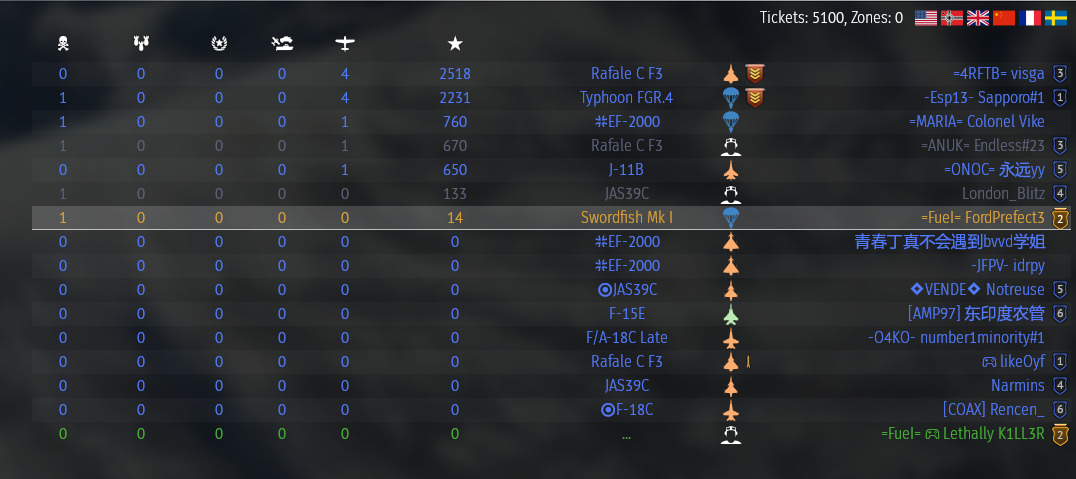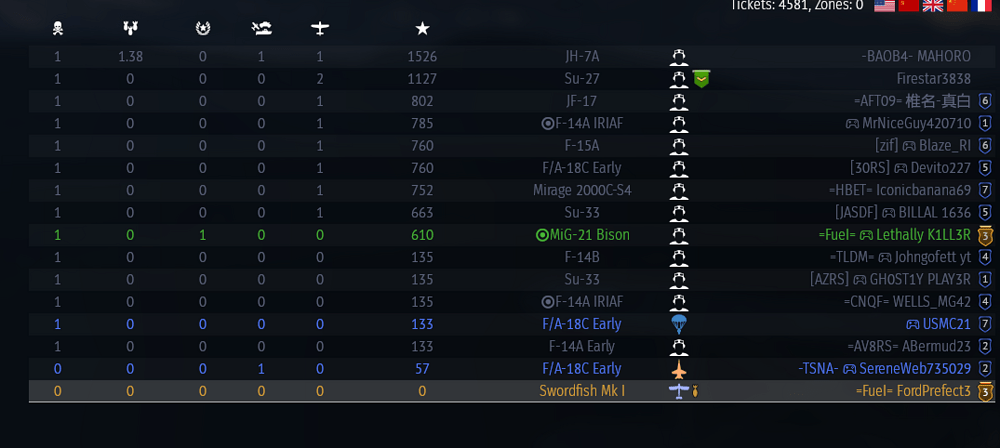Despite being a biplane from the 1930s, the Swordfish possesses a set of characteristics that render it disproportionately effective. It is virtually immune to most missile tracking systems due to the absence of a substantial thermal or radar signature. Its flight profile—extremely slow and low to the ground—allows it to bypass standard engagement logic used by modern fighters. These qualities are not drawbacks; they are system-breaking.
Historically, the aircraft also holds a combat record that outperforms many vehicles rated three to four times higher. It delivered critical hits in engagements such as the sinking of the Bismarck and the attack on Taranto. If historical performance is at least a small part of BR logic—as it appears to be in other cases—it’s very, very unclear why this aircraft remains near the bottom.
If BR values are meant to reflect actual battlefield effectiveness and disruption potential, the Swordfish’s placement should be re-evaluated immediately. A BR of 14.0 would better reflect its cutting-edge capabilities in the current matchmaking ecosystem. I ask that the data behind its current placement be reviewed and a full rebalance considered.
24 Likes
It’s so over for Bismarck
This made me laugh, nice one!
I’ve yet to encounter a Swordfish with my Bismarck… Let’s hope it stays that way!
You ain’t fooling anyone Bismarck/Regia Marina/U-boat
/j
Under recent testing, the swordfish has consistently held up to ARB standards at 14.3 I might add, surpassing the previously expected capabilities estimated in my original post.
When played in 14.3 matches against real-life counterparts, it was found that nine out of ten times, the swordfish gets slightly damaged by an R-77 Vympel, yet this light damage is easily shook off zero out of ten times. In addition to this news, it was discovered the swordfish could consistently bring in a top score of 14 mission points, which is more than what you receive when you don’t receive mission points.
EDIT: Further testing has proven the great survivability of the swordfish, as it is often the last-man-standing on a team
3 Likes
That’s very interesting, so it’s an extremely powerfil plane!
I said this ages ago! There’s zero reason why the F-22 and the Felon can’t come to War Thunder, we’ve been enjoying clubbing seals in the Swordfish for years.
Yet still the devs won’t listen.
1 Like


